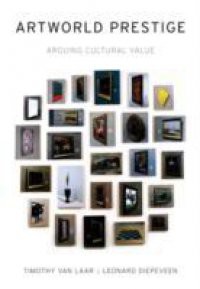Why does the artworld often privilege one cultural form over another? Why does it grant more attention to reviews in, say, Artforum over ARTnews? And how can an artist once hailed as visionary be dismissed as derivative just a few years later? Exploring the ever-shifting estimations of value that make up the confluence of artists, critics, patrons, and gallery owners known as the artworld, Timothy van Laar and Leonard Diepeveen argue that prestige, a matter of socially constructed deference and conferral, plays an indispensable role in the attention and reception given to modern and contemporary art. After an initial chapter that develops a theory of prestige and the poignancy of its loss, the book looks at how arguments of prestige function in systems of representation, various media, and art's relationship to affect. It considers twentieth-century artists who moved not away from, but toward figuration; looks at what is at stake in the recurrent argument about the death of painting; examines the decline and an apparent return of sensual pleasure as a central attribute of visual art; and concludes with a look at the peculiar function of prestige in outsider art. Illustrated with artwork by David Park, Jorge Pardo, Gerhard Richter, Anish Kapoor, Cecily Brown, Howard Finster, and others, Artworld Prestige provides an engaging guide to the changes, debates, and shifts that animate aesthetic judgments.

